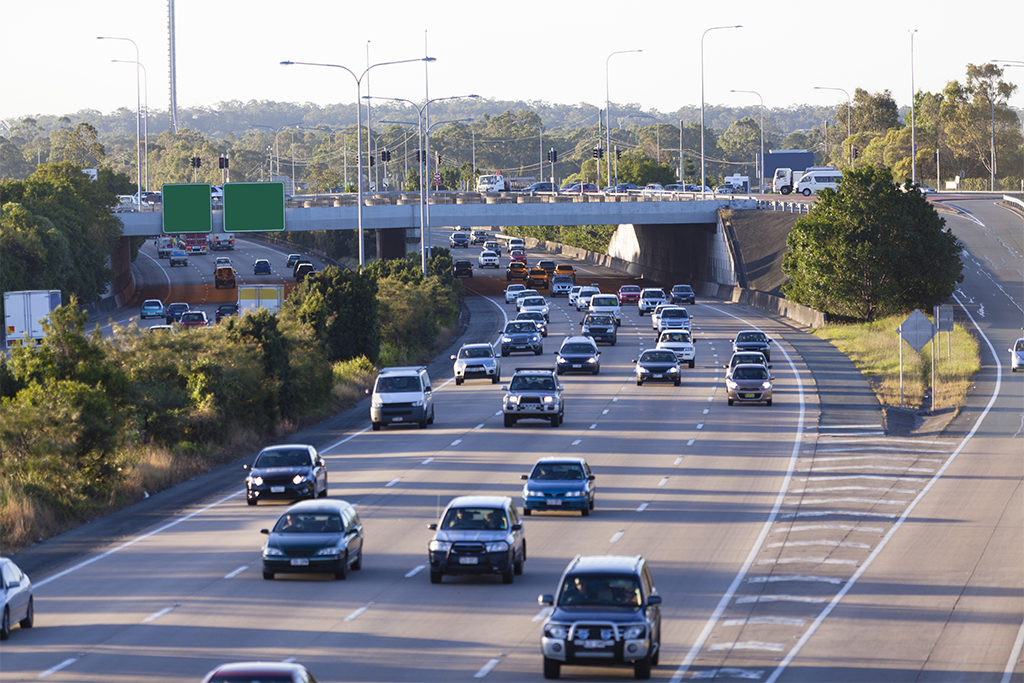EME binder is an exciting new development in bitumen technology. Bevan Sullivan of Fulton Hogan, a key Viva Energy Australia customer, explains why.
Australia is a vast, road-reliant country that for much of its productivity depends on heavy industry. Our arterial roads are getting busier and busier, with ever-increasing loads. We need strong, well-maintained arterials and freeways. The introduction of EME − a new type of ultra-hard asphalt from France (the acronym stands for Enrobés á Module Elevé) – is a welcome development. The binder for EME2 promises to become the industry standard for the heavy-load-bearing roads of the future.
Fulton Hogan is one of Viva Energy’s key customers for bitumen. As the National Technical Manager at Fulton Hogan, I am responsible for material development, so I am fully aware of road-surfacing products. The majority of Fulton Hogan’s projects are state-specific, so we’re contracted to do the work by state governments. We construct major urban arterials, freeways and other road projects in conjunction with state road authorities.

Hard binder for a strong, thinner asphalt
I am particularly optimistic about the prospects of this new type of binder. It’s different to what we currently use in Australia – it’s a very hard bitumen. If you tried to push your finger into it at room temperature you wouldn’t be able to do so – it’s like glass. Regular bitumen is a lot softer and will deform if you put your finger into it.
Because the EME binder is such a hard form of bitumen it makes a very stiff asphalt, and because it’s a very stiff asphalt we put extra binder in it, but the combination of extra binder plus the very hard binder makes an asphalt that’s very strong, as well as thinner, with high resistance to flexing. So it actually reduces your overall pavement thickness.
An ultimately cost-effective option
EME binder is perfect for roads with heavier traffic loads – highways, collector roads − routes that carry heavy vehicles. You start to get great economic benefits from using this product on those types of roads, even though this is a more expensive binder than the regular bitumen, because you’re able to lay the road with a lower pavement thickness for the same traffic loadings.
Lays like asphalt –and lasts
An advantage of EME is that it lays like conventional asphalt, so there’s no difference in input and work – there’s no special equipment, no special production methods and no new know-how required for us to lay it. So it can be produced and laid with our standard paving equipment without additional labour and equipment overheads to Fulton Hogan.
EME compares favourably to competitor products because you can achieve the same design life and structural capacity with it – that’s 40-plus years of design life from the road. And because it has the same structural capacity as concrete, it will maintain its smoothness for a lower cost than a concrete pavement − and it’s maintainable.
Often with maintenance work you’re limited with the thickness of repairs that can be undertaken because there are often underground services running beneath the road – the last thing you want to do is knock out a water pipe – and there are time constraints on works to minimise disruption to traffic. There’s a very small working window for maintenance, so any product that can last longer between resurfacings has significant advantages in maintenance applications. EME asphalts have a life span of five to 10 times that of regular asphalt at the same thickness.
A winner over concrete
As for concrete roads, they are extremely difficult to maintain once they reach a certain roughness level. EME, on the other hand, can be maintained using the same road resurfacing treatments we use for asphalt that uses regular bitumen. If designed properly we won't have to patch it at all − when a road surface gets rough, all we do is plane off the top and put a new surface on and make it smooth again. And that’s very easy and effective for asphalt-based pavements.
Concrete is so difficult to maintain that we just don’t maintain it − and for a country like Australia, which is so vast and so reliant on road travel, it’s essential to be able to count on well-maintained road surfaces.
Conclusion
EME is still a very new product on the Australian market – it is just filtering through to the state road authorities now. They’re interested in using it, and because of its many beneficial properties, I have no doubt it will become a preferred treatment for highway construction in heavy applications. Other applications we forecast for this product include airfields and industrial pavements. This design concept has been used in France for the past 20 years now, but it is perfectly suited to Australian applications.
Interested in Viva Energy's products?
Find out more here